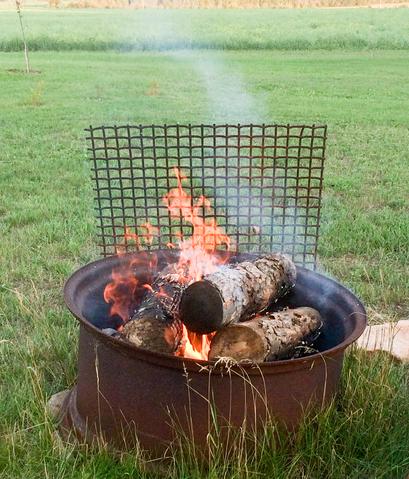I’m SO excited to introduce our very first guest blogger today, Rawnie Espersen from Cochrane, Alberta. Rawnie is a Horticulturist who has a passion for gardening, is a mother of three and a female entrepreneur. Her company is called Cochrane Property Maintenance which provides lawn and garden care to Cochrane and the surrounding area. She and her husband have taken care of many lawns and gardens over the past 10 years.

Here’s what Rawnie recommends for spring yard maintenance.
“After what felt like a long winter, many are excited to start working on their lawns and gardens. Here are a few maintenance tips to help ensure your lawn is the envy of the neighbourhood!
Many people talk about aerating and power raking. But what exactly is it and why is it done?
Aeration is when a machine mechanically pulls out plugs of soil and leaves small holes in the lawn. The aeration holes break up compacted areas and allow water, nutrients and air to enter the root zone. If you have kids and pets running around on your lawn, compaction is usually an issue and you should try to aerate every season.
Benefits of aerating: Improved air exchange, increased water and fertilizer uptake, stronger roots, thatch breakdown and reduced water pooling.
How do you know if your lawn is in need of aeration? If your lawn is heavily used, if it feels hard or dries out easily, or if the thatch layer is over half an inch thick then it’s time to aerate.
Power raking involves mechanically removing thatch from the lawn. But what is thatch? Thatch is a buildup of dead grass, stems and roots on the top of the soil. As thatch builds up there is a decrease of air, water and nutrients entering the soil. Hand raking quite often doesn’t get enough thatch out of the lawn. Power raking can be very helpful.
How do you know if your lawn should be power raked? Some thatch is good for the lawn as it provides protection from extreme temperatures and fluctuation in moisture. Power raking should only be done if the thatch layer is more than half an inch thick.
Benefits of power raking: Promotes a thicker and healthier lawn, increases the effectiveness of fertilizer and water uptake.
Fertilizer: Applying a spring lawn fertilizer is very beneficial. Fertilizer contains three numbers. The first one is for nitrogen, the middle for phosphorous and the last for potassium. In the spring and summer fertilize your lawn with a high nitrogen number. These fertilizers are very common and can be bought at your local garden centre. Corn gluten is becoming popular as an organic alterative. Corn gluten is a good source of nitrogen and also prevents weeds from germinating. Other options for organic fertilizer are alfalfa, worm castings or compost tea.”
Comments +